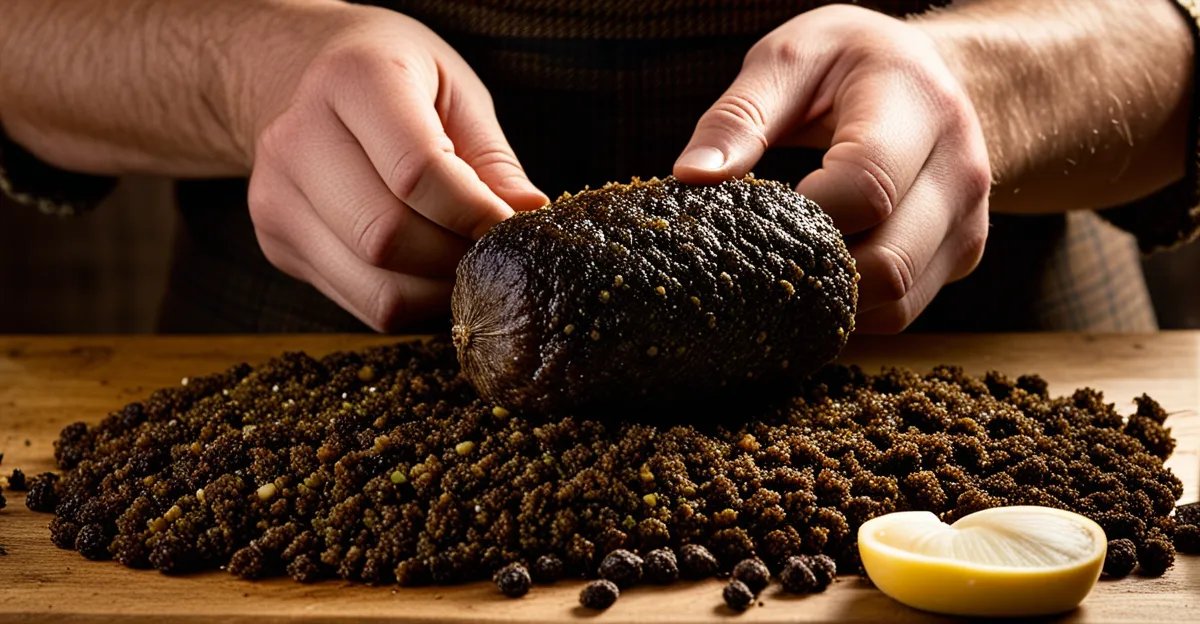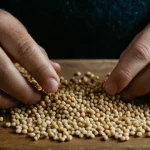Essential Ingredients for Authentic Haggis
Understanding the core of authentic haggis ingredients is crucial for anyone committed to replicating this traditional Scottish delicacy. Central to authentic haggis is sheep’s pluck—the heart, liver, and lungs of the sheep—which forms the foundation of flavor and texture. These organs provide rich, earthy notes essential for true Scottish recipes. Alongside the pluck, key traditional components include oatmeal, suet, onions, and a precise seasoning blend.
Sourcing traditional components can sometimes be a challenge outside of Scotland, but it is vital for authenticity. Locally sourced pluck, when available, ensures freshness, while reputable online suppliers offer an alternative for hard-to-find ingredients. High-quality oatmeal and fresh suet also contribute significantly to the final product’s character.
One must not overlook the sheep’s stomach casing, which is indispensable for wrapping the mixture. This casing not only holds the haggis together throughout cooking but also imparts subtle flavors and maintains the traditional texture. Its proper preparation and sourcing reflect a commitment to preserving the authentic haggis experience as outlined in Scottish recipes.
Preparation and Assembly Tips
When preparing haggis, the first step involves cleaning and prepping the sheep’s pluck meticulously. The heart, liver, and lungs must be thoroughly washed to remove any impurities. This step is crucial for both hygiene and flavor. The sheep’s stomach casing also requires careful preparation: it should be soaked and rinsed multiple times to ensure it is clean and pliable for stuffing.
Next, combining the oatmeal, suet, onions, and seasoning to the right texture is essential. The oatmeal should be toasted lightly beforehand to bring out a nutty flavor and to absorb the fat properly. Mixing with finely chopped suet and onions ensures a balanced consistency. The seasoning blend must be added gradually to avoid overpowering; it should enhance the authentic flavor profile known in traditional Scottish cooking techniques.
The final assembly involves stuffing the mixture firmly but not overly compacted into the prepared casing. This ensures that the haggis holds its shape during cooking but does not burst. After stuffing, the casing needs to be securely sewn or tied at both ends, and pricked with a needle to allow steam to escape during boiling. These steps in assembling haggis uphold the traditional method, delivering a product that respects the textures and flavors established in classic Scottish recipes.
Cooking Techniques for Traditional Haggis
Mastering the haggis cooking method is essential to preserve its unique texture and robust flavor. The traditional approach is boiling, which gently cooks the haggis while maintaining moisture. To achieve this, use a large pot filled with water, ensuring the haggis is fully submerged but not crowded.
Monitoring water temperature is critical: keep a steady simmer rather than a rolling boil. Excessive boiling increases the risk of the casing bursting, releasing the flavorful filling prematurely. Cooking duration typically ranges from 1.5 to 3 hours, depending on haggis size; a slow, controlled cook ensures even heat penetration without toughening the mixture.
To further avoid splitting, prick the casing lightly with a needle before cooking. This small perforation allows steam to escape and reduces pressure buildup. Wrapping the haggis in muslin cloth tied securely can reinforce the casing, providing extra protection during boiling.
These cooking tips honor the traditional Scottish recipes and techniques, resulting in a haggis cooked perfectly with a tender crumb and intact casing. Following these methods lets the authentic flavors develop fully, ensuring the signature haggis experience is relished without compromise.
Seasoning and Flavour Enhancements
Seasoning is pivotal in crafting the signature taste of authentic haggis, rooted deeply in Scottish spices tradition. The classic blend typically includes black pepper, coriander, nutmeg, and allspice. These spices lend warmth and complexity but must be used judiciously to avoid overpowering the natural flavors of the sheep’s pluck and oatmeal. Achieving the perfect balance requires gradual addition during mixing, ensuring the seasoning enhances rather than masks the essence.
How do you ensure your haggis seasoning honors tradition? Start with small quantities, tasting the mixture as you add spices. This step aligns with traditional Scottish cooking techniques that emphasize harmony and restraint. Remember, seasoning balance is key for maintaining authenticity in Scottish recipes. Over-spicing can detract from the rustic charm that defines true haggis.
For those exploring regional variations, cautious experimentation is encouraged. Adding herbs like thyme or a touch of cayenne can introduce subtle nuances without losing the authentic core. Such enhancements should complement, not replace, the foundational spice mix.
In summary, proper haggis seasoning melds carefully selected Scottish spices to highlight the hearty ingredients. A considered approach to flavoring ensures a vibrant yet balanced haggis true to its cultural roots.
Tips to Avoid Common Mistakes
Avoiding common pitfalls is key to mastering authentic haggis. One frequent mistake is the casing bursting during cooking, which spoils texture and flavor. To prevent this, prick the sheep’s stomach casing lightly with a needle before boiling. This small vent reduces internal pressure and helps the casing withstand the long cooking time.
Another common error is not achieving the ideal texture for the oatmeal and meat mixture. The oatmeal must be toasted just right to absorb suet and seasoning properly without becoming mushy. Overmixing or stuffing too tightly can lead to a dense haggis that is less enjoyable. When preparing haggis, aim for a balance where the filling is moist but not compacted, allowing the flavors to meld while maintaining a pleasant crumb.
Proper seasoning balance is also critical. Many fall into the trap of over-spicing, which overwhelms the delicate earthiness of sheep’s pluck. Gradually add spices, tasting as you go, to honor the authentic profile intrinsic to traditional Scottish recipes. These haggis tips ensure your preparation respects the heritage while delivering the classic taste and texture expected of this cherished dish.
Cultural and Historical Context of Haggis
Haggis holds a venerable place in Scottish food traditions, tracing back centuries as a staple of Scotland’s culinary heritage. Its origins reveal a resourceful use of sheep’s offal, reflecting a time when nothing was wasted. As a humble dish, haggis exemplifies rustic Scotland, nourishing communities with locally available ingredients such as sheep’s pluck and oatmeal.
The cultural significance of haggis is especially prominent during Burns Night, celebrated annually on January 25th. This event honors the poet Robert Burns, who immortalized haggis in his poem Address to a Haggis. During Burns Night suppers, the traditional haggis is piped in with great ceremony, followed by the recital of Burns’ verses, underscoring haggis’ symbolic role in Scottish identity.
Understanding haggis history enriches appreciation for its authenticity. While modern adaptations exist, respecting traditional Scottish recipes preserves the integrity and flavor profiles that define haggis. The dish remains a culinary emblem that links Scotland’s past to its present, marrying authentic haggis ingredients with cultural pride.
This cultural resonance fosters a deeper commitment among enthusiasts to uphold the essence of haggis—celebrating its origins while embracing its role in contemporary Scottish life.











